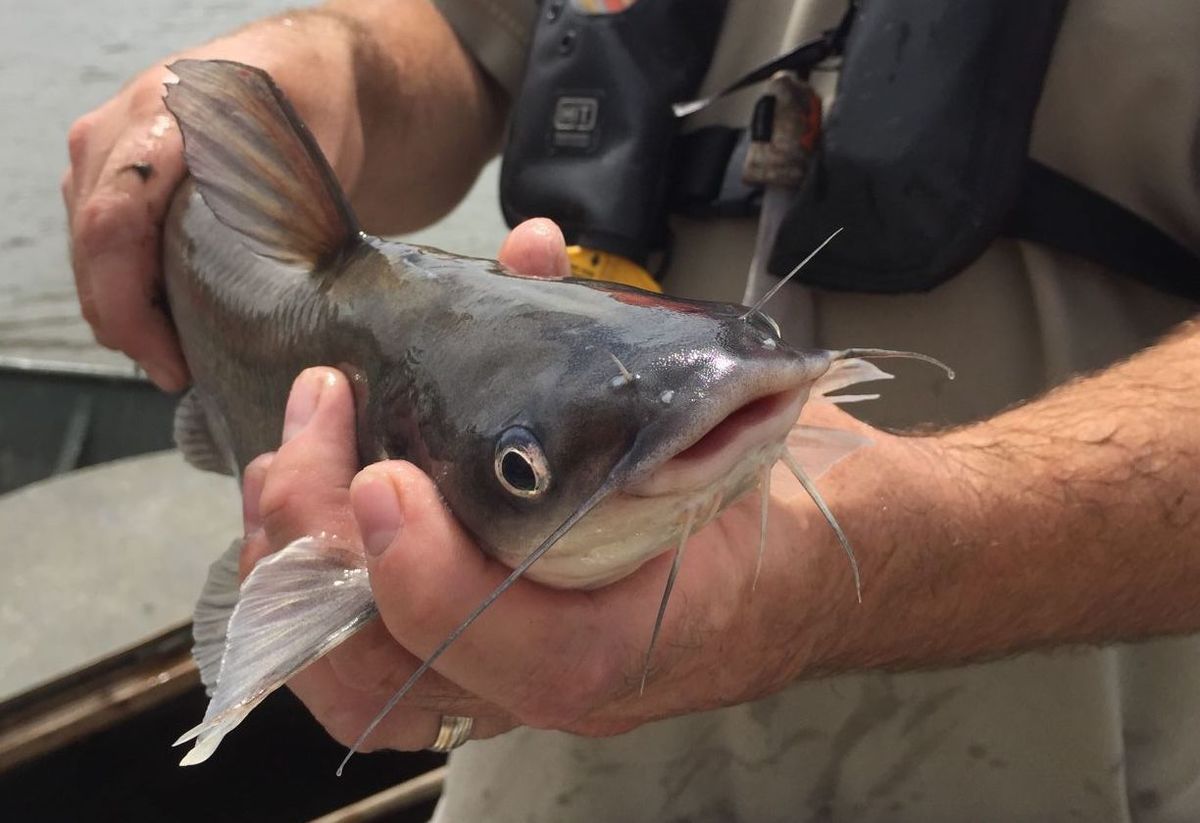
“Virginia’s booming wild-caught blue catfish industry may weaken under federal regulation” Provided by the Freelance Star
By Pamela A. D’Angelo For The Free Lance–Star
It’s been a rough year for Virginia’s seafood industry.
Earlier this year, the U.S. cap on foreign seasonal H2B workers forced some local seafood processing plants to shut down parts of their operations. Then came the bad news that blue crab harvests would be reduced this fall and next spring, after fisheries managers determined the juvenile population was low.
Now, the new wild-caught, blue catfish industry is at risk because of tighter inspection rules set for full implementation by the USDA on Sept. 1. It will be the only fish to come under USDA inspection.
Though the inspections were meant to help U.S. catfish farmers compete with Asian imports by leveling the playing field, it puts all catfish, including wild-caught blue catfish, under the same strict inspections as meat, poultry and eggs.
Mike Hutt, who promotes the state’s seafood industry, said Virginia has not had any problems with quality or recalls. He said many of the processors are small operations that have been in business for 30 or 40 years and won’t be able to afford the cost of coming up to code.
“With these rules put in place, I don’t know that we’ll have any processors left, or maybe one or two,” Hutt said. “All of these issues are putting impairments on them being able to run a business like they’ve run it for years, with a good, quality product.”
Virginia introduced blue catfish as a trophy fish in the 1970s, but the population of the invasive species grew out of control in Chesapeake Bay tributaries. Once they reach about 20 inches, they start to eat whatever other species come their way, including blue crabs. Watermen, who are under heavy regulation because of dwindling fish and crab populations, saw an opportunity, and so a thriving blue catfish industry was created. Last year, more than 2.4 million pounds of blue catfish were harvested in Virginia waters, most of it from the Potomac, bringing a dockside value of $756,000, according to the Virginia Marine Resources Commission.
Fish were inspected by the Food and Drug Administration, until a Mississippi congressman came up with the legislation to help his fish-farming constituents compete with imports by having all catfish—domestic and imported—inspected under stricter U.S. Department of Agriculture rules. USDA says it uses EPA standards to test for more than 200 toxic residues. The agency has already turned away one shipment from Asia, said Roberta Wagner of USDA’s Food Safety and Inspection Service. She was in Richmond last month to meet with harvesters and processors and importers about the new rules set to be fully enforced Sept. 1.
“We are looking for salmonella, but it’s not regulatory. Of course, the banned dyes, drug residues, pesticides, heavy metals,” she said.
Potomac River Fisheries Commissioner Martin Gary said the commercial fishermen on the Potomac primarily take blue catfish that are less than 30 inches, though some can grow to be 100 pounds. He said Wegmans and Whole Foods, who buy and market the fish, are doing their own random sampling for contaminants.
“They’ve told the processors and the harvesters if they find any hot fish, they’re off, they’re done,” said Gary, referring to a fish that tests positive for a contaminant. Because Maryland has statutory authority over the Potomac, the PRFC works closely with the state on fish contaminant testing.
“The latest round I saw showed a pretty clean fish sub-30 inches,” he said.
Larger fish, over 32 inches, are generally not harvested for commercial eating. Virginia has size limits in place for the York and James Rivers because of PCB contamination in fish over 32 inches.
Otherwise, there are no size limits for commercial watermen in Maryland and Virginia, but there are recommended meal limitations on larger fish because of PCBs and mercury contaminants. Processors and harvesters say they are also concerned about being able to comply with the USDA inspection process. USDA inspectors are at processing sites eight hours a day at no charge to the business, but if an inspector has to work overtime, the processor has to pay $70 for each hour. That can quickly add up as wild-caught blue catfish harvesting is tied to weather, tides and other variables that make it difficult to say when and how many fish will arrive at a plant.
“I never seen a fish carry a watch or a calendar,” said L.W. Nixon, a third-generation processor from North Carolina who buys blue catfish from Virginia. “Any fish house you go to ain’t an 8-hour-a-day job. We start at 5:30 in the morning and we’re liable to finish at 8 or 9 o’clock at night and sometimes later, depending on what’s sitting and what’s rolling.”
Greg Casten is president of ProFish, a processor in Washington. He and his family own several restaurants in and around Washington, including Tony and Joe’s, and sell fresh fish to federal facilities including Congress. He said he sells a great deal of local wild-caught blue catfish.
“If you get rid of the wild processing or if you make it more expensive, the product is going to lose some of its appeal,” he said. “Chefs are always looking for the newest thing that nobody knows about, and when you take away that aspect and the fact that it’s doing such a good thing for the environment, it’s just really sad that one of the byproducts of probably good-aimed legislation is not going to help our region.”
This article was provided to Friends of the Rappahannock with permission from the Free Lance Star. Please see the original article here

